- Details
- Hits: 908
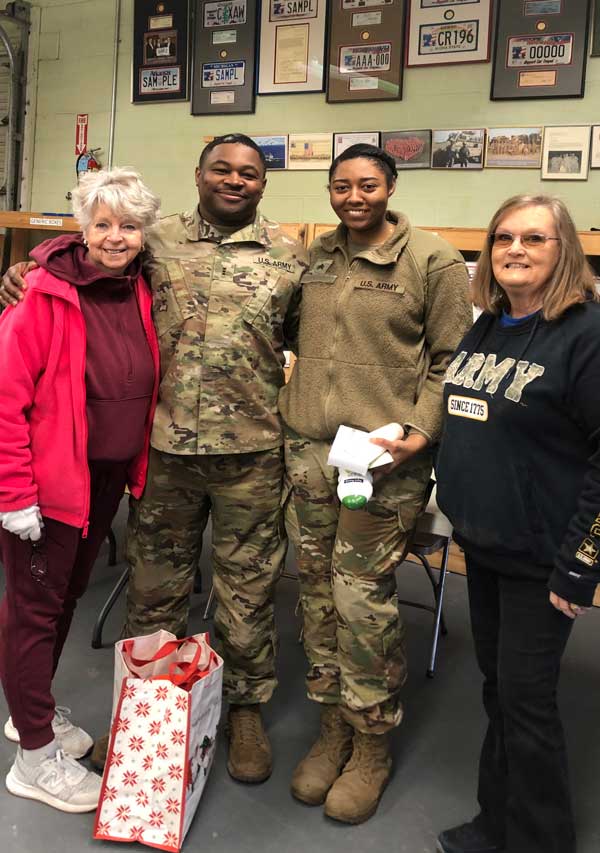
America, Feb 13, 2024 - Tons of American love heads out constantly to the troops all over the world. You get it to us, we get it to them. Pretty simple. And while they’re there that somebody back here knows about them, cares about them, and is doing their part to support them. Is this a great country or what!
- Details
- Hits: 846
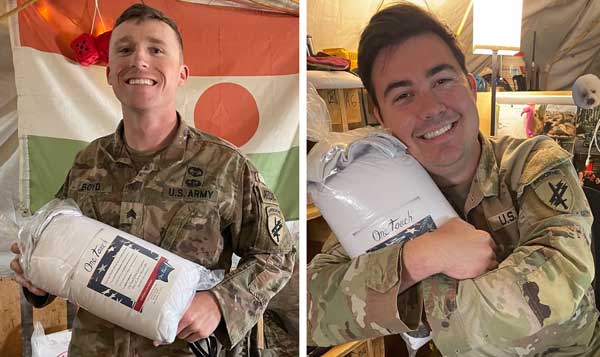
OCONUS, Feb. 6, 2024 – Somewhere out there, in places undisclosed, American soldiers take comfort with their One Touch pillows delivered by Your SOT Team, after being provided to us by good Americans and good American companies. From the home front to the front lines, if they're there, we’re with them!® Good job everyone!
- Details
- Hits: 769

Little Falls, Minnesota. (January 22, 2024): The last place you would expect to find Navy Divers is roaring through frozen forests on snowmobiles. In this photo by Lance Corporal Hunter Jones, Sailors undergo Arctic mobility training during the annual Snow Crab exercises at Camp Ripley, Illinois. This 53,000-acre military and civilian training facility is operated by the Minnesota National Guard and is located near the city of Little Falls in the central part of the state. The location of the camp is ideal due to its numerous frozen lakes and harsh environment for most of the year.
As part of the Navy’s expeditionary combat force, deep-sea divers use the camp to evaluate their performance and to test their equipment in a simulated Arctic environment. At Camp Ridley, the ice is about 16-inches thick and the water temperature hovers just above freezing which leads to equipment challenges that many divers have not seen. During the exercise, the divers spent as much as ten hours below the frozen surface.
The Navy has increased its presence in the Arctic in recent years as have peer adversaries Russia and China. Under the Navy’s Strategic Blueprint for the Arctic, Navy divers are at the tip of the spear in building a more capable Arctic naval force. This global competition ensures we will likely see divers in some strange places well into the future.
- Details
- Hits: 1144
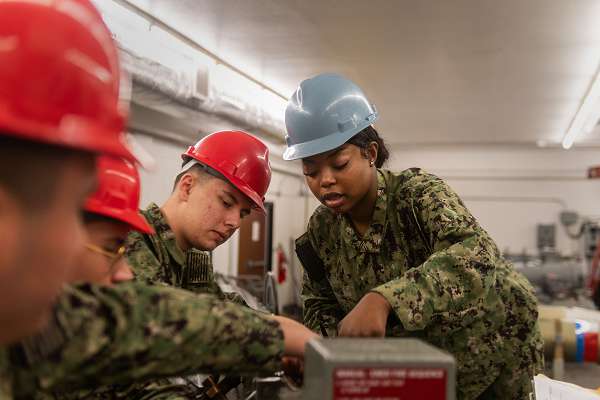
Naval Station Great Lakes, Illinois. (January 29, 2024): In this photo by Petty Officer 2nd Class Matt Hall, Sailors simulate loading a war shot torpedo into a surface vessel torpedo tube at Gunners Mate school. A Gunners Mate, or GM, is responsible for every type of weaponry aboard ship, from shot guns to guided missiles. If it shoots, it’s their gig.
These highly trained professionals are charged with securing all weaponry, repairing defense systems, and maintaining guided missile launchers. GMs are also experts at a multitude of small arms including shotguns, automatic rifles, pistols, and submachine guns. On the explosives side, GMs stow and maintain all bombs, portable and large-scale, along with mounted weapons systems and various rockets, torpedoes, and missiles. GMs also assist with operating shooting ranges, armories, and the storage and maintenance of arms.
To become a GM, a recruit must pass boot camp at Recruit Training Command Great Lakes followed by fifteen more weeks of specialized training at Class "A" Technical School. Here Sailors study electronics and the operation of launch systems and the torpedoes they will encounter aboard ship. After graduation, DMs may be assigned to a combat surface craft, a weapons installation, ordnance depot, or aviation activity in the U.S. or overseas.
- Details
- Hits: 919
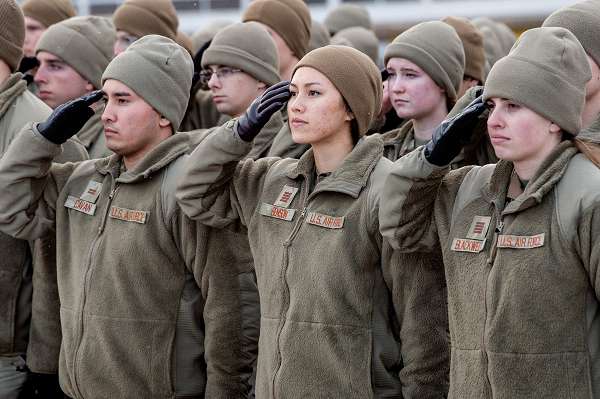
Colorado Springs, Colorado. (January 24, 2024): Practically everyone who has served in the armed forces has participated in a time-honored tradition, the Change of Command ceremony. In this photo by Rayna Grace, cadets salute during a Cadet Wing Change of Command ceremony transferring power from Cadet 1st Class Isaac Bates to Cadet 1st Class Abigail Worley at the Air Force Academy.
The ceremony ensures the continuity of command by marking the transfer of authority, responsibility, and accountability from one commanding officer to another. There is normally a passing of colors, or unit standards, from the outgoing commander to the incoming one which ensures that the unit is never without leadership. The military often includes such symbolism as aircraft flyovers, a ceremonial review of the troops, gun salutes, and military bands in the ceremony.
The Change of Command ceremony lets these cadets know they will never be leaderless during their career as Air Force officers.
- Details
- Hits: 2229
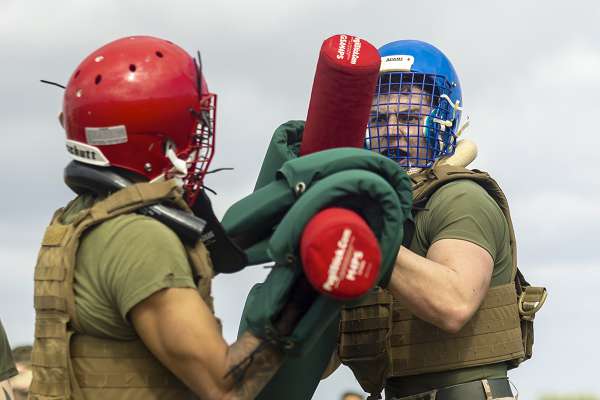
Futenma, Japan. (January 19, 2024): Whether it is a fight at school or in sports like boxing, you always remember your first taste of close quarter combat. In this photo by Lance Corporal Sav Ford, Marines participate in a pugil stick battle during a field competition. These pugil stick battles have become a rite of passage for Marines and Soldiers undergoing basic combat training.
The word is… the troops look forward to them.
The goal of the pugil stick is to simulate close combat in battlefield situations while maintaining a controlled, safe environment for safety. The weapon is designed like a rifle and bayonet, one end is usually designated as the butt end while another simulates the bayonet. This heavily padded pole-like training weapon has been used since the early 1940s by military personnel training for rifle and bayonet combat.
While many feel a bit apprehensive or fearful at first, these battles have become a tradition and a source of pride. Battling with pugil sticks tests both a recruit’s mind and body and even a less than perfect bout instills confidence.
The name "pugil stick" comes from the Latin pugnus (fist) which is also the term used for boxing (pugilist) and the word "pugnacious" (eager to fight). The bouts are full contact with recruits wearing protective gear such as football helmets, hockey gloves, and chest and shin guards. Much like traditional martial arts, the techniques involve deflecting the blow of an attacker and countering with a downward strike, simulating a "bayonet". Likewise, students are taught to use a straight jab, usually with the butt end.
Perhaps the most significant aspect of this training is the mental development that the troops undergo. Most civilians are unprepared for the life and death scenarios warfighters are likely to encounter in real combat. Pugil stick training motivates troops to develop the “warrior spirit,” toughness, and confidence they will need on the battlefield.


